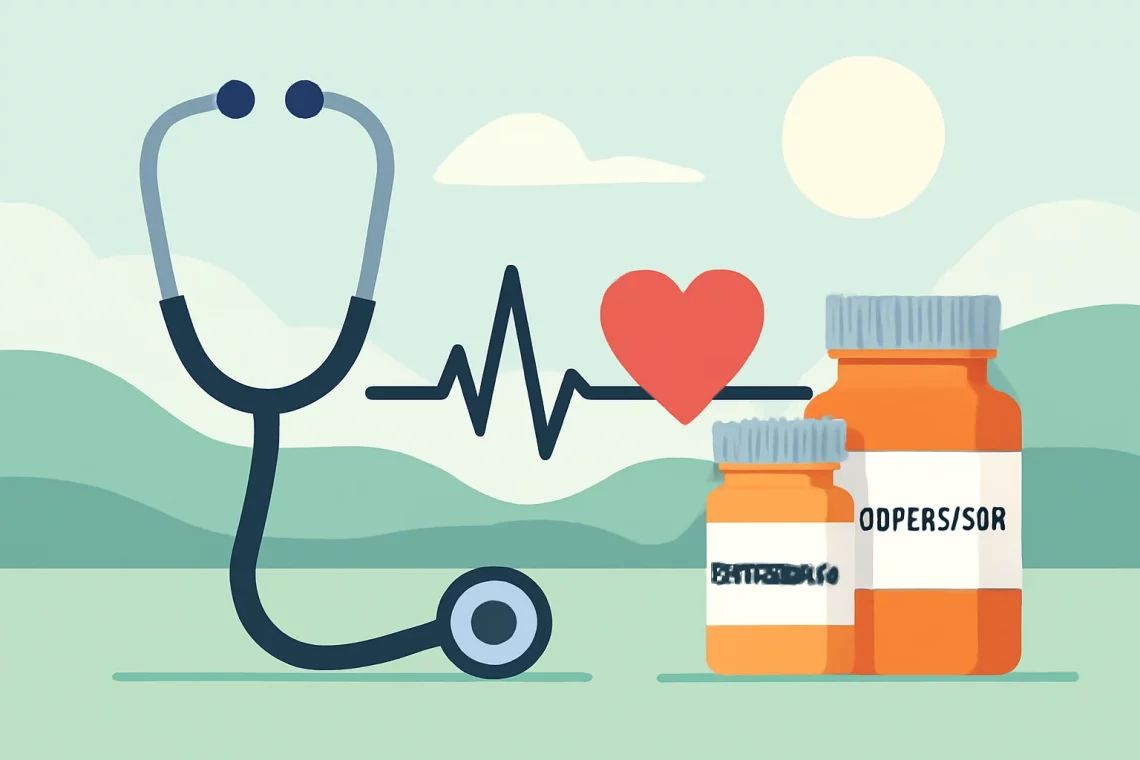
Metoprolol vs Lopressor: Understanding Their Differences and Uses
Metoprolol and Lopressor are two terms that often come up in discussions about heart health and hypertension management. As beta-blockers, both medications play a crucial role in treating various cardiovascular conditions, but they do so in slightly different ways. Understanding these drugs and their implications for health can make a significant difference in patient outcomes.
Metoprolol, the generic name, is widely used in clinical settings to manage high blood pressure, heart rhythm disorders, and other heart-related issues. Lopressor, the brand name under which metoprolol is marketed, is often prescribed in hospitals and outpatient settings. While both names refer to the same active ingredient, their formulations, dosages, and specific uses can differ, which is important for patients and healthcare providers to recognize.
With the increasing prevalence of cardiovascular diseases, information about effective treatments like metoprolol and Lopressor is essential for patients looking to make informed decisions about their health. In this article, we will delve deeper into the characteristics, uses, and potential side effects of these medications, aiming to provide clear insights into their roles in modern medicine.
Understanding Metoprolol
Metoprolol is a selective beta-1 adrenergic antagonist, primarily affecting the heart. By blocking the action of certain neurotransmitters, it effectively reduces heart rate, myocardial contractility, and overall cardiac output. This mechanism is crucial for patients suffering from conditions such as hypertension, angina, and heart failure.
One of the primary benefits of metoprolol is its ability to lower blood pressure. For individuals diagnosed with hypertension, consistent use of metoprolol can lead to significant improvements in cardiovascular health. Lower blood pressure reduces the risk of heart attack and stroke, making it a vital component of many treatment regimens.
Moreover, metoprolol is often prescribed for patients who have had a heart attack. By decreasing the workload on the heart and improving its efficiency, metoprolol can help prevent further cardiac events. Patients with heart rhythm disorders, such as atrial fibrillation, may also benefit from metoprolol, as it helps to stabilize the heart’s rhythm.
However, like any medication, metoprolol is not without its side effects. Common adverse reactions may include fatigue, dizziness, and nausea. More serious concerns, such as bradycardia (an abnormally slow heart rate) and respiratory issues in patients with asthma, should also be monitored. It is essential for patients to discuss their medical history with their healthcare provider to ensure that metoprolol is a safe choice for their specific situation.
In summary, metoprolol is a well-established medication with a broad range of applications in cardiology. Its effectiveness in managing various heart-related conditions makes it a cornerstone in the treatment of hypertension and other cardiovascular diseases.
Lopressor: The Brand Name
Lopressor is the brand name for metoprolol tartrate, a formulation of the drug that is commonly used in clinical practice. While it contains the same active ingredient as generic metoprolol, Lopressor is often distinguished by its dosing schedule and specific indications.
Lopressor is typically available in immediate-release tablets, which means it is designed to be taken multiple times a day. This can be beneficial for patients who require quick adjustments to their medication or those who are starting treatment for the first time. Immediate-release formulations allow for more flexible dosing, which can be tailored to the patient’s needs and response to treatment.
In some cases, healthcare providers may choose to prescribe Lopressor over other formulations of metoprolol due to its established brand recognition and availability. Many patients feel more comfortable using a branded medication because it is often perceived as more reliable, although the effectiveness of generic options is equivalent.
It’s worth noting that healthcare providers may adjust the dosage of Lopressor based on individual patient responses and tolerability. Regular monitoring is crucial, particularly for patients who are new to this medication or those who are transitioning from another beta-blocker.
In addition to hypertension, Lopressor is also indicated for the management of angina and the treatment of acute myocardial infarction. The flexibility of Lopressor’s dosing and its well-studied efficacy make it a popular choice among clinicians for managing various cardiovascular conditions.
Despite its benefits, patients should remain vigilant about potential side effects associated with Lopressor, which are similar to those of metoprolol. Communicating openly with healthcare providers about any adverse reactions is essential for ensuring a safe and effective treatment experience.
Comparison of Metoprolol and Lopressor
While metoprolol and Lopressor refer to the same active ingredient, there are several factors to consider when comparing the two. The primary difference lies in their formulations and delivery mechanisms. Metoprolol is available in both immediate-release (as Lopressor) and extended-release formulations (as Toprol-XL), which can influence how and when patients take the medication.
Immediate-release Lopressor requires multiple doses throughout the day, making it essential for patients to adhere to a strict schedule. This can be a challenge for some individuals, particularly those with busy lifestyles. In contrast, the extended-release formulation allows for once-daily dosing, which can improve patient compliance and convenience.
Both formulations are effective in treating hypertension and other heart conditions, but the choice between them often depends on individual circumstances and preferences. For example, patients who experience consistent side effects from the immediate-release version may benefit from switching to the extended-release formulation, which may provide more stable blood levels and fewer fluctuations in heart rate or blood pressure.
Additionally, the potential for drug interactions and contraindications can vary between formulations. It’s crucial for patients to inform their healthcare providers about all medications they are taking to avoid adverse interactions.
Ultimately, the decision to use metoprolol versus Lopressor should be made collaboratively between the patient and their healthcare provider. By taking into account the patient’s medical history, lifestyle, and treatment goals, a tailored approach can be developed to optimize cardiovascular health.
Potential Side Effects and Considerations
While both metoprolol and Lopressor are generally well-tolerated, they can cause side effects that vary in severity among patients. Common side effects include fatigue, dizziness, and gastrointestinal disturbances like nausea or diarrhea. These side effects may diminish over time as the body adjusts to the medication.
More serious side effects, although less common, can include bradycardia, hypotension (low blood pressure), and respiratory issues, particularly in patients with pre-existing lung conditions. Patients with asthma or chronic obstructive pulmonary disease (COPD) should use caution and consult their healthcare provider before starting treatment with either drug.
It is also important to note that abruptly stopping either metoprolol or Lopressor can lead to rebound hypertension and increased heart rate. Therefore, any changes in medication should be managed under the guidance of a healthcare professional to prevent complications.
Patients should also be aware of the potential for drug interactions. Metoprolol may interact with other medications, including certain antidepressants, antidiabetic drugs, and antihypertensives. Always inform your healthcare provider of all medications, supplements, and over-the-counter drugs being taken.
In addition to medication considerations, lifestyle factors such as diet, exercise, and stress management play a crucial role in cardiovascular health. Patients are encouraged to adopt a holistic approach that includes regular check-ups, healthy eating, and physical activity alongside their prescribed treatments.
In conclusion, while metoprolol and Lopressor serve similar purposes in managing cardiovascular conditions, understanding their differences, potential side effects, and the importance of individualized treatment is vital for optimizing patient outcomes.
**Disclaimer:** This article is not intended as medical advice. Always consult a healthcare professional for medical concerns and before starting any new medication.




